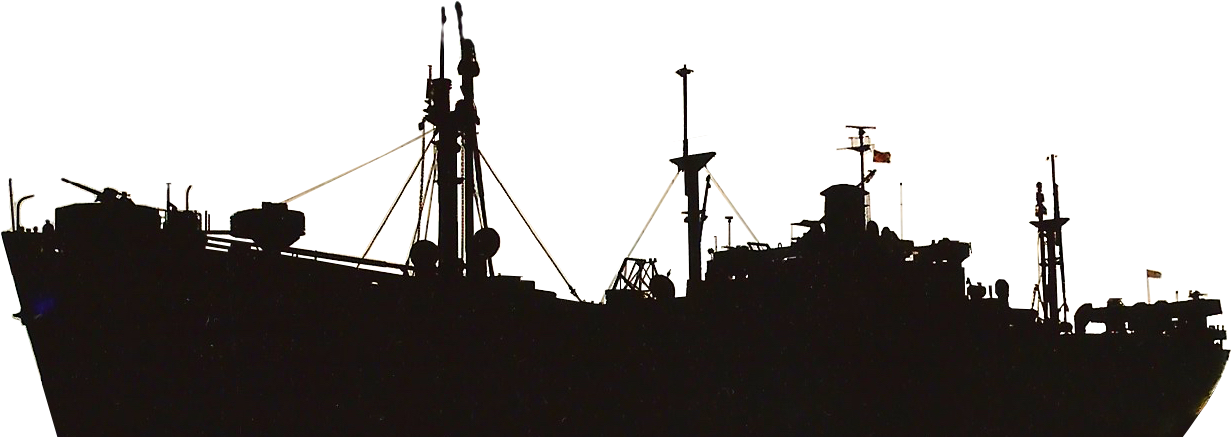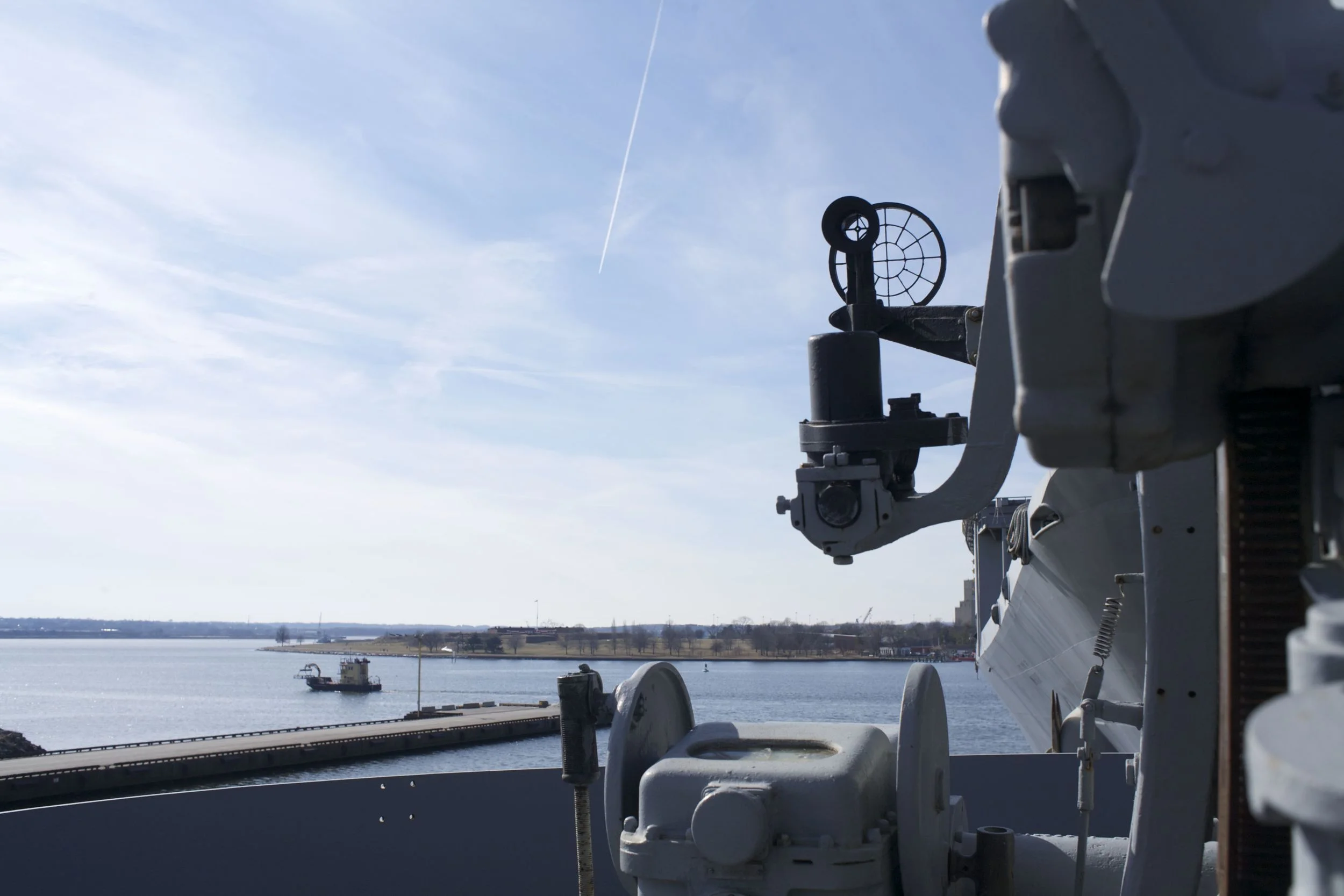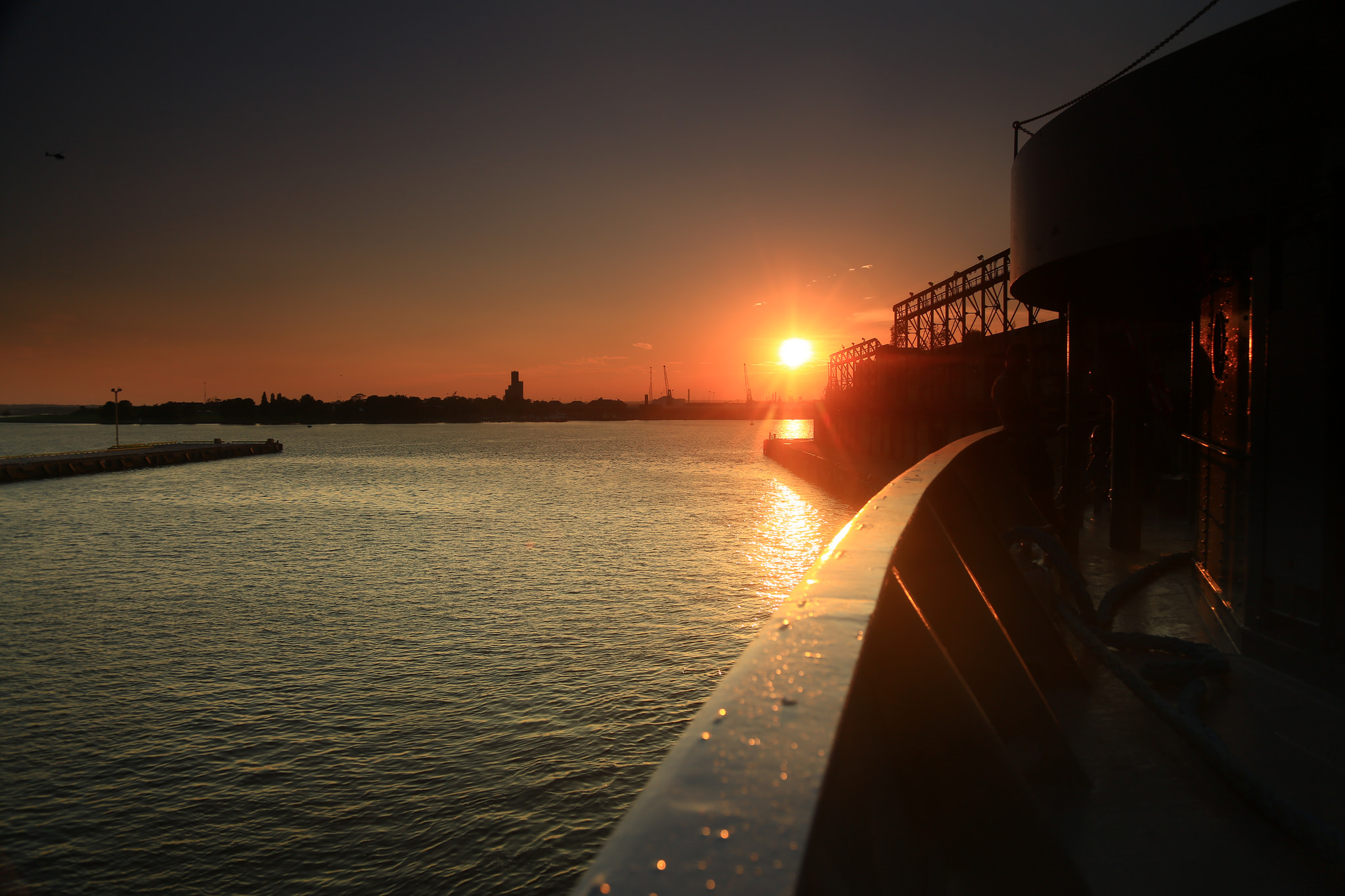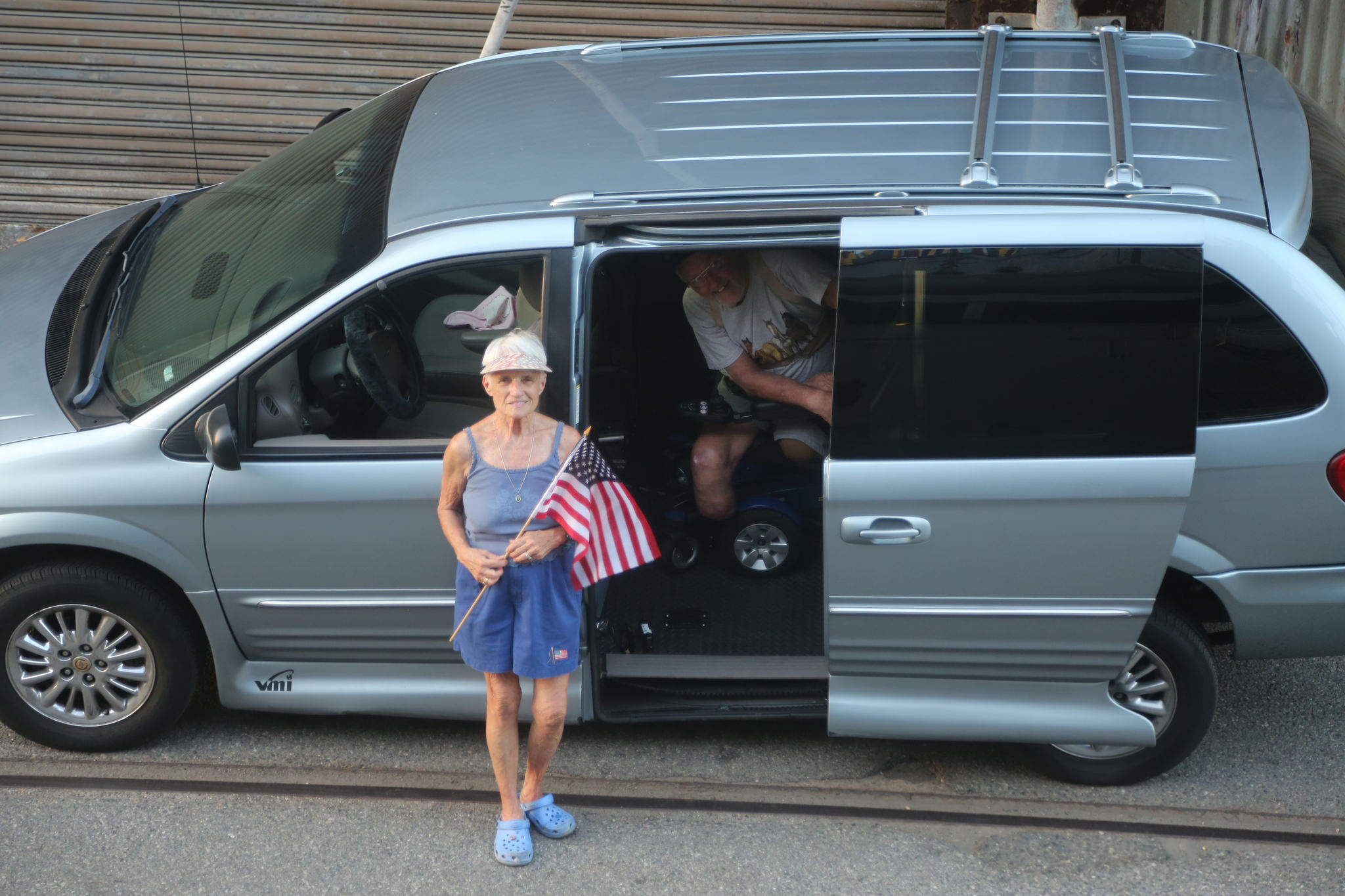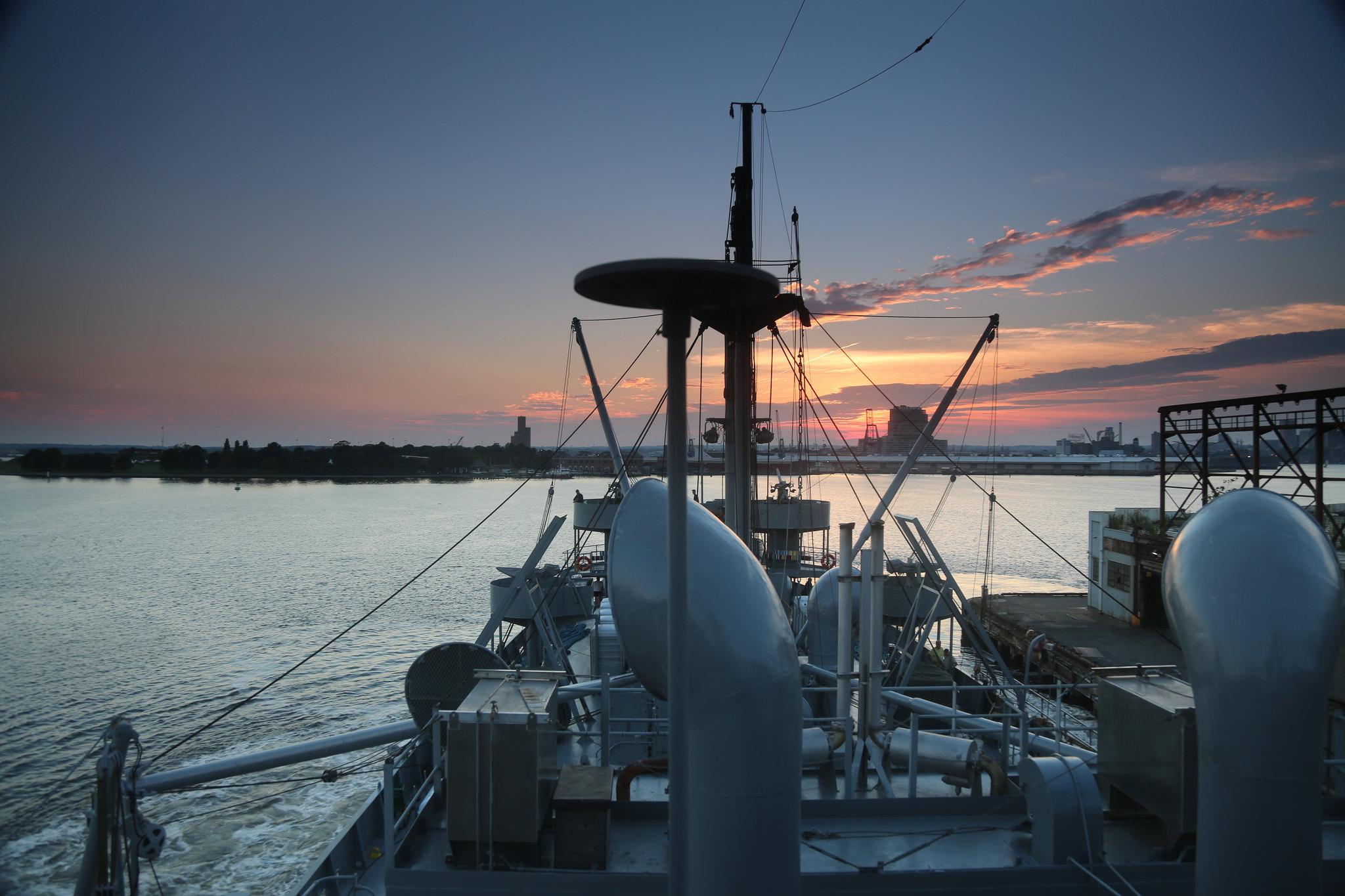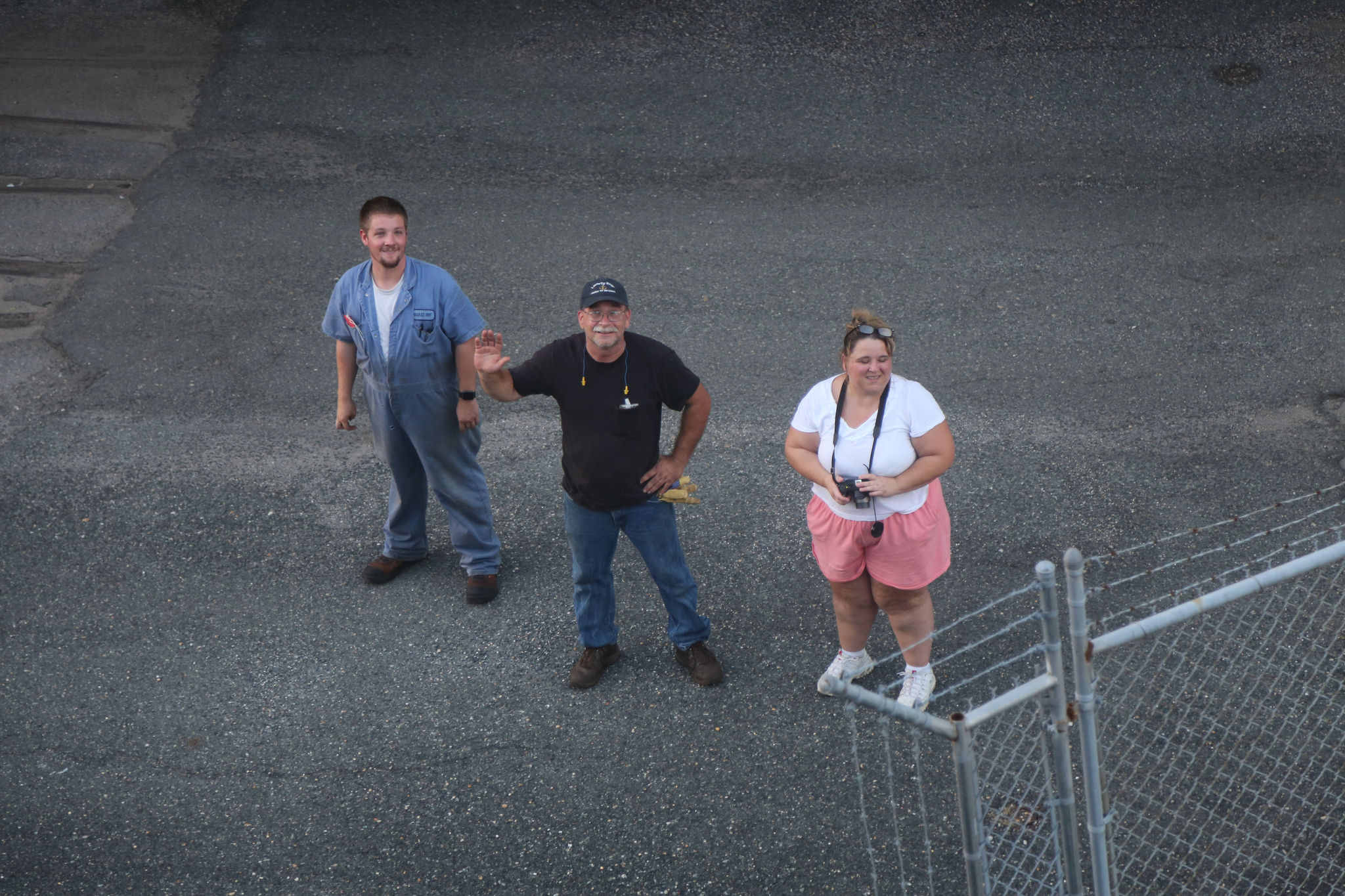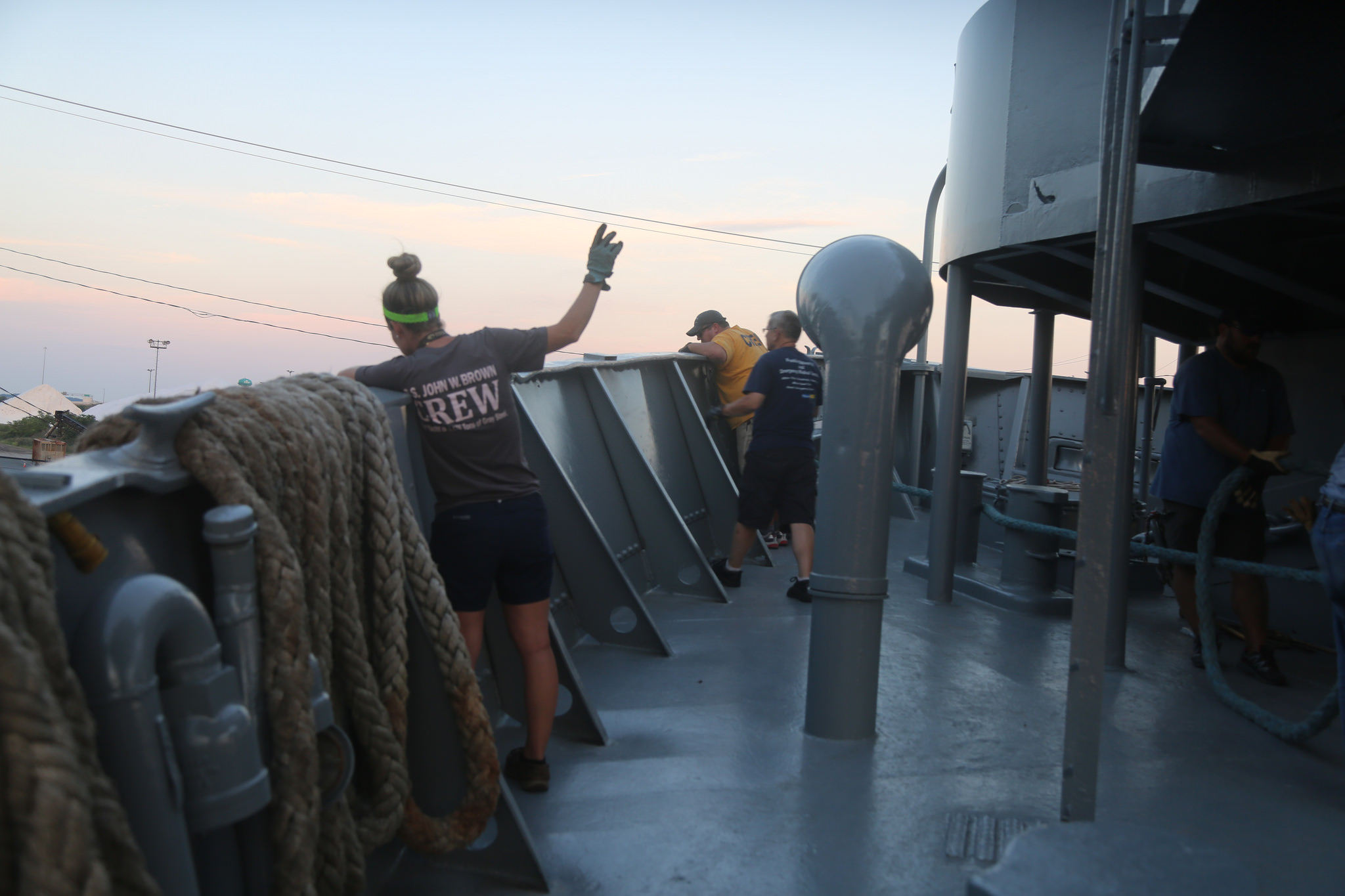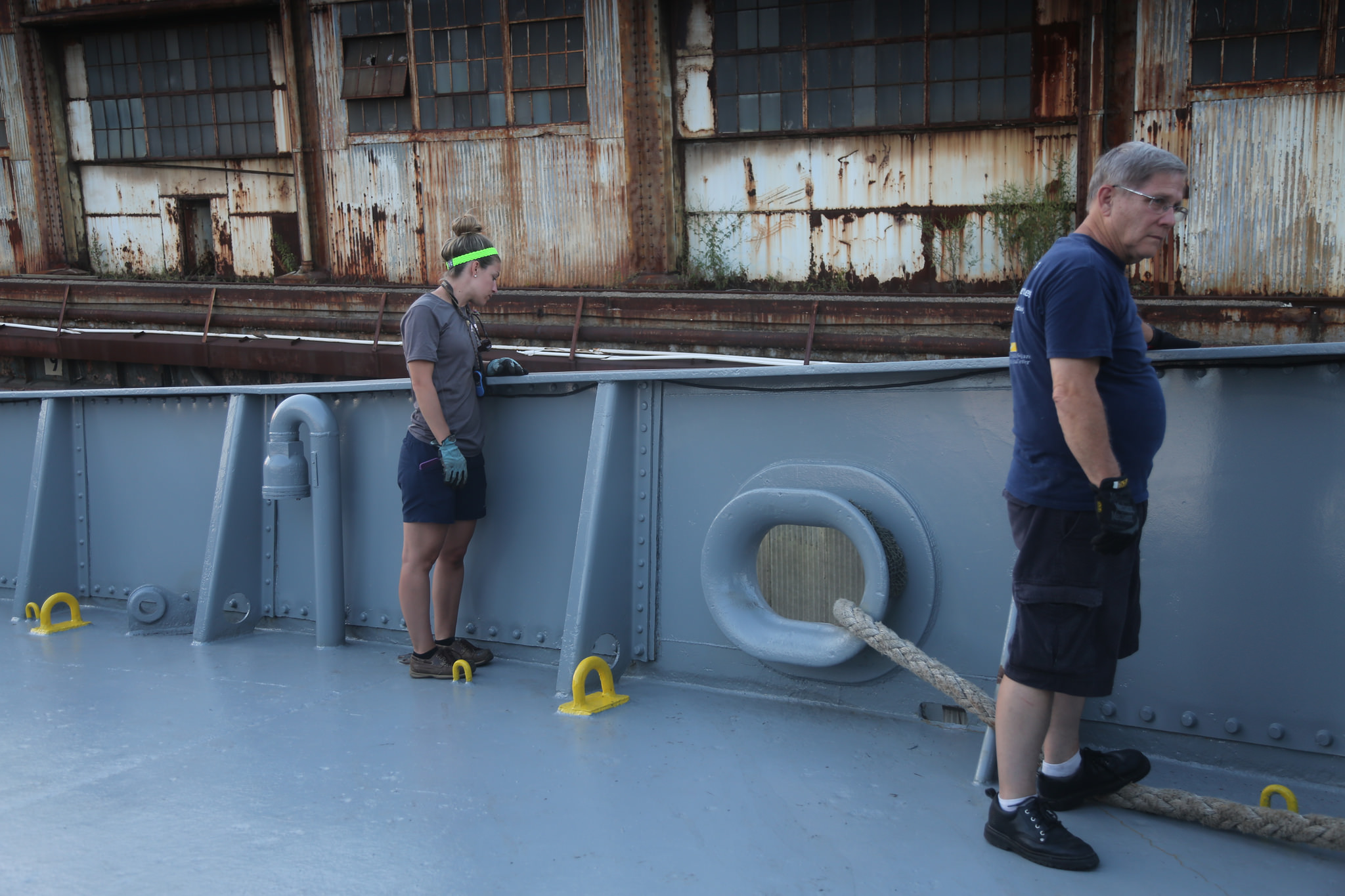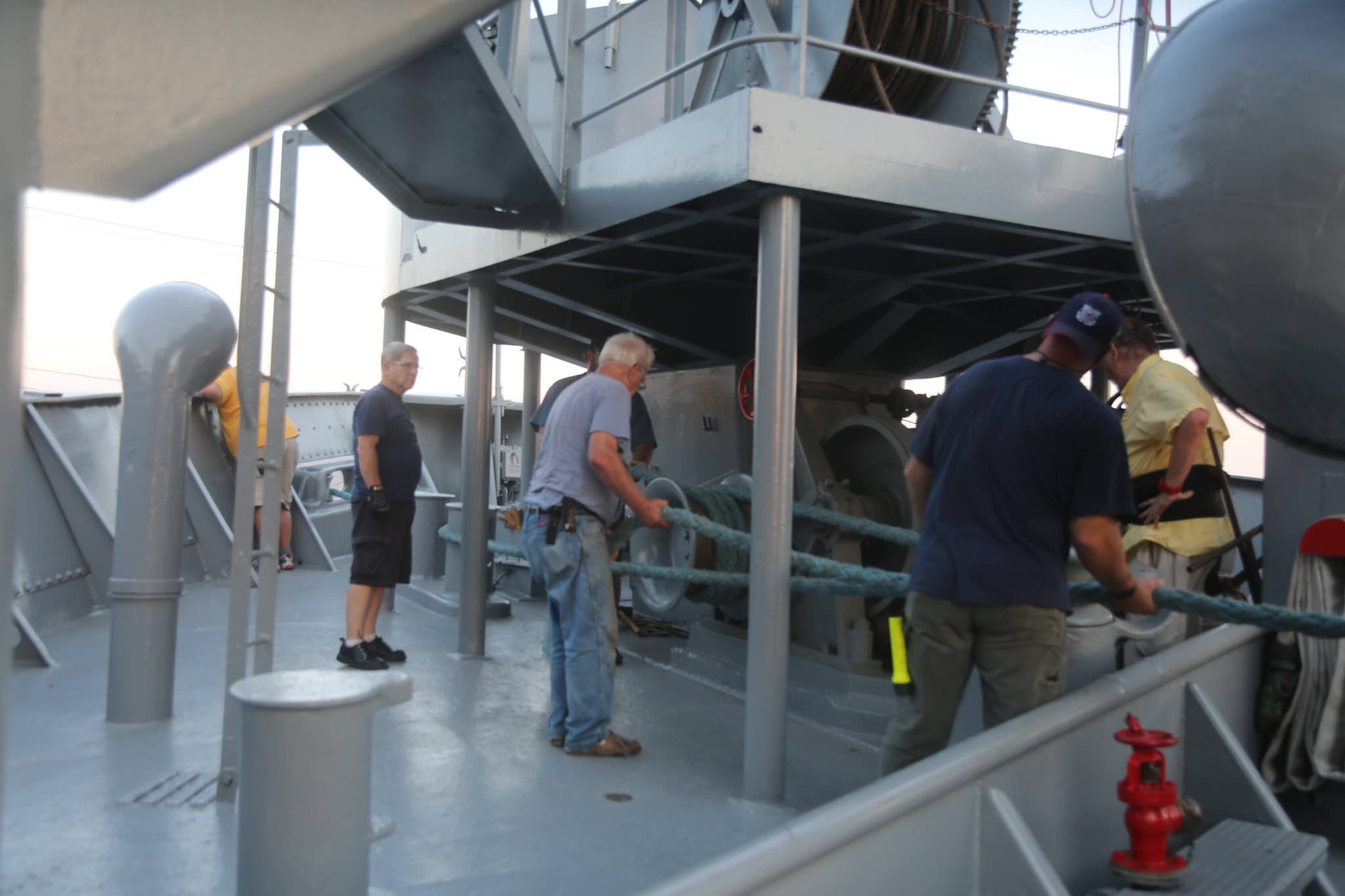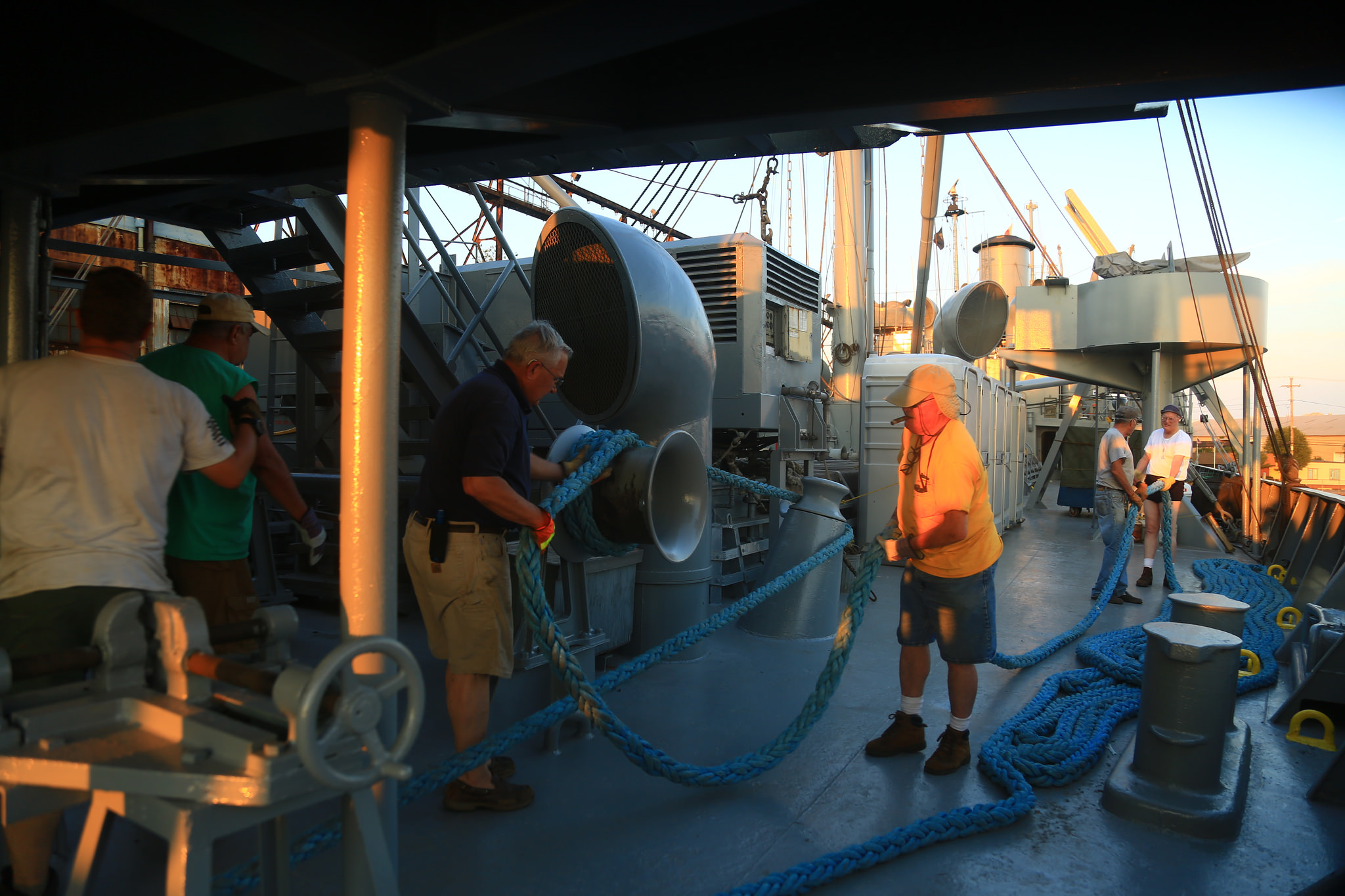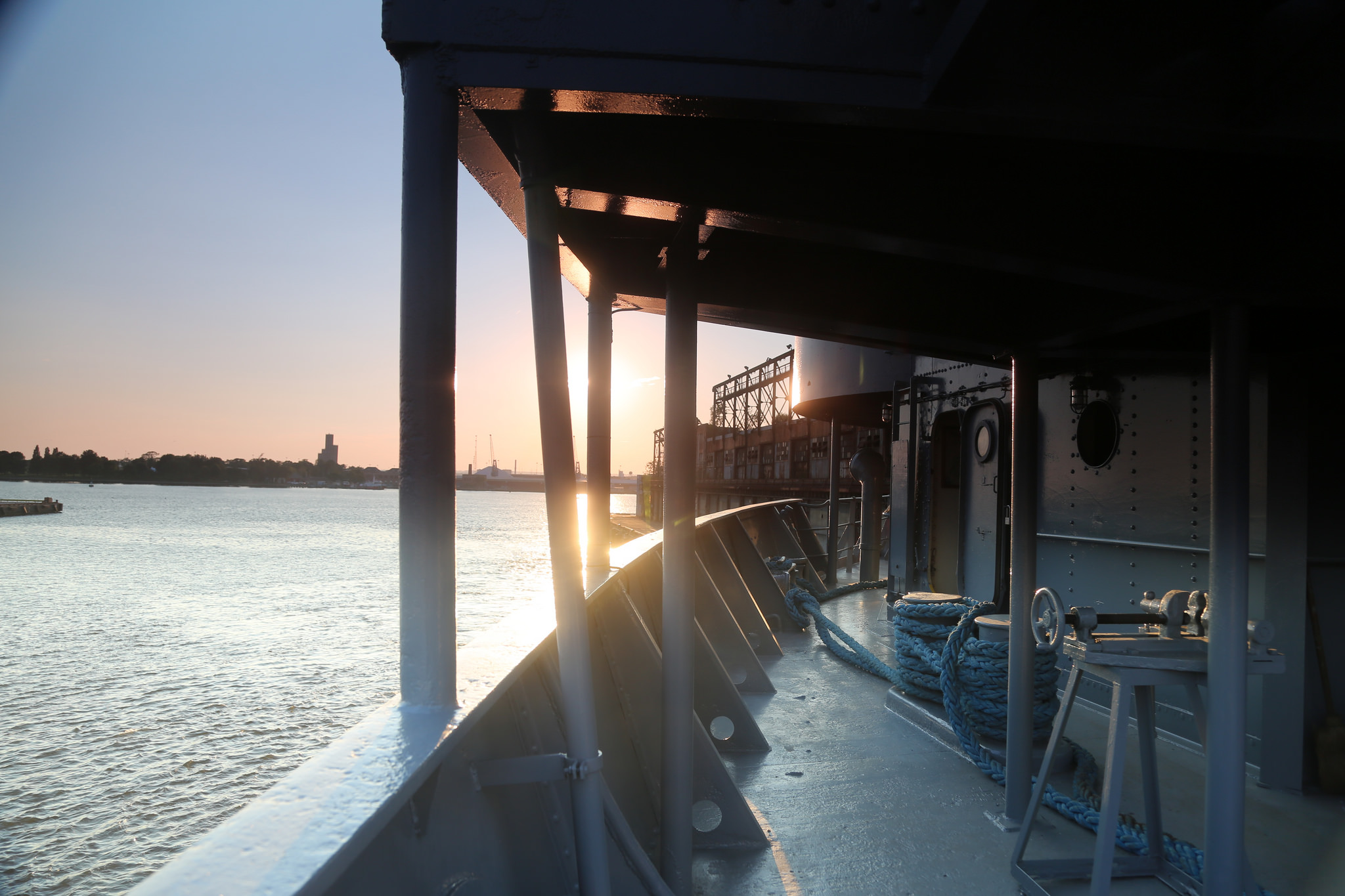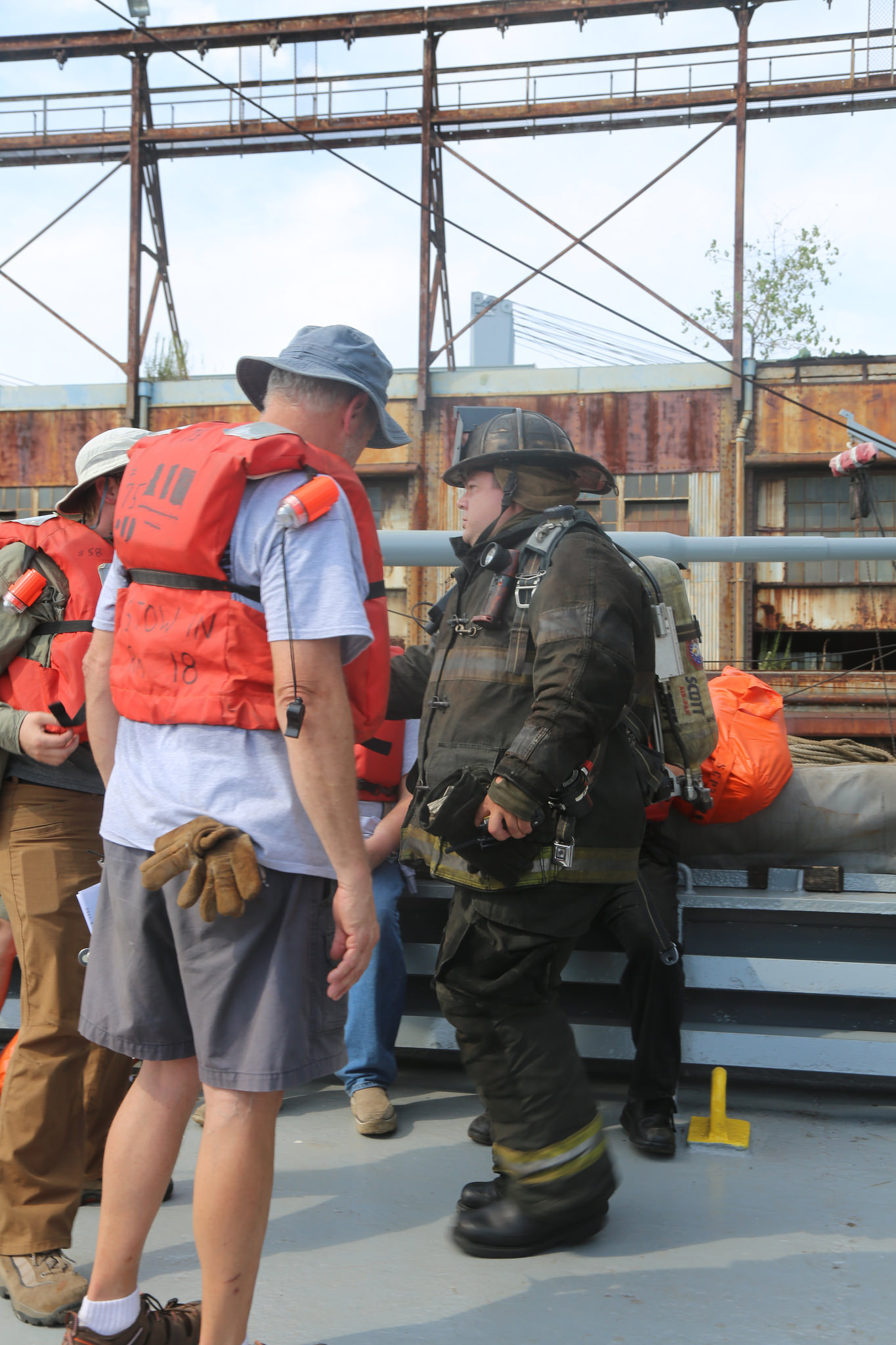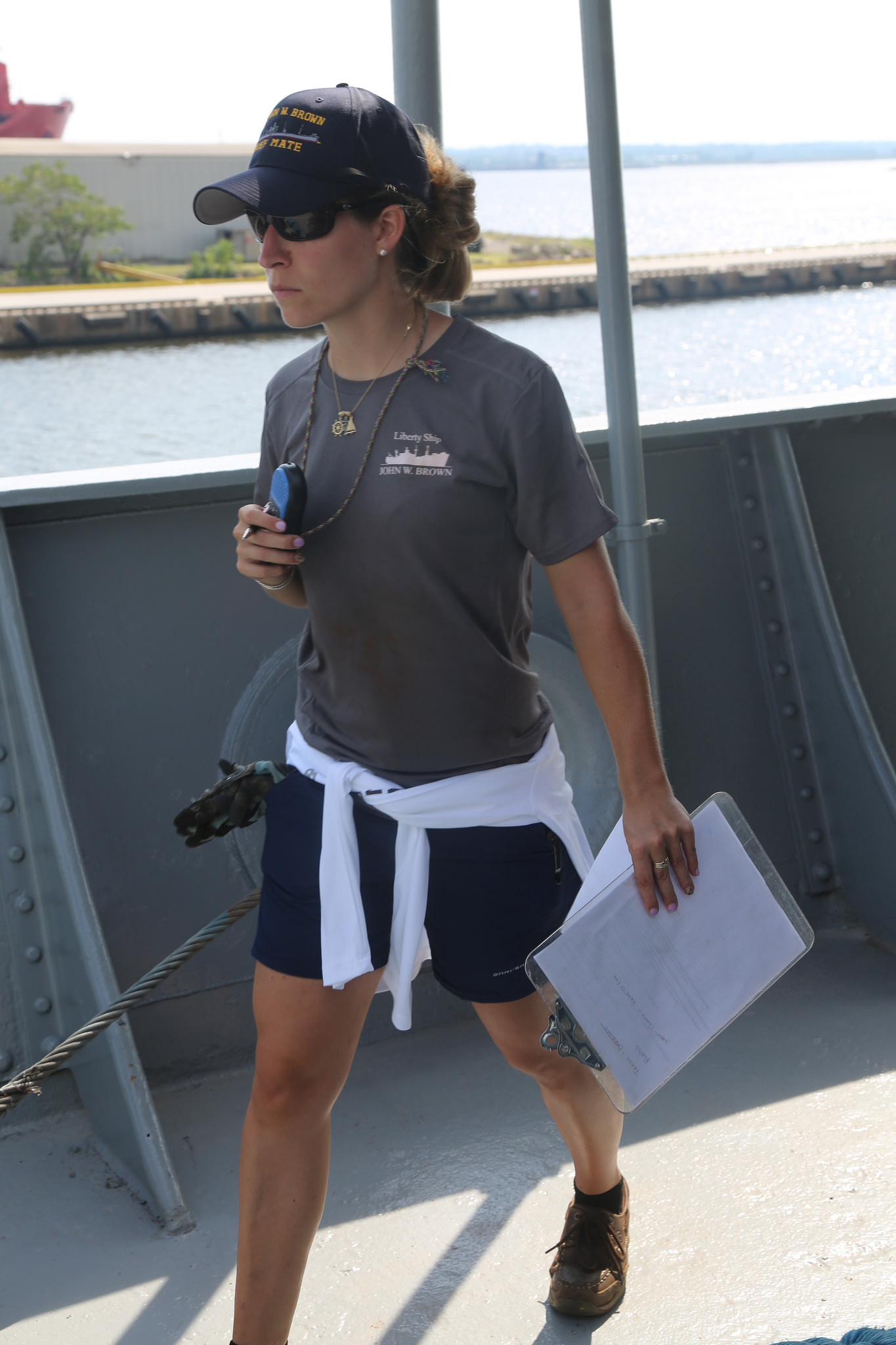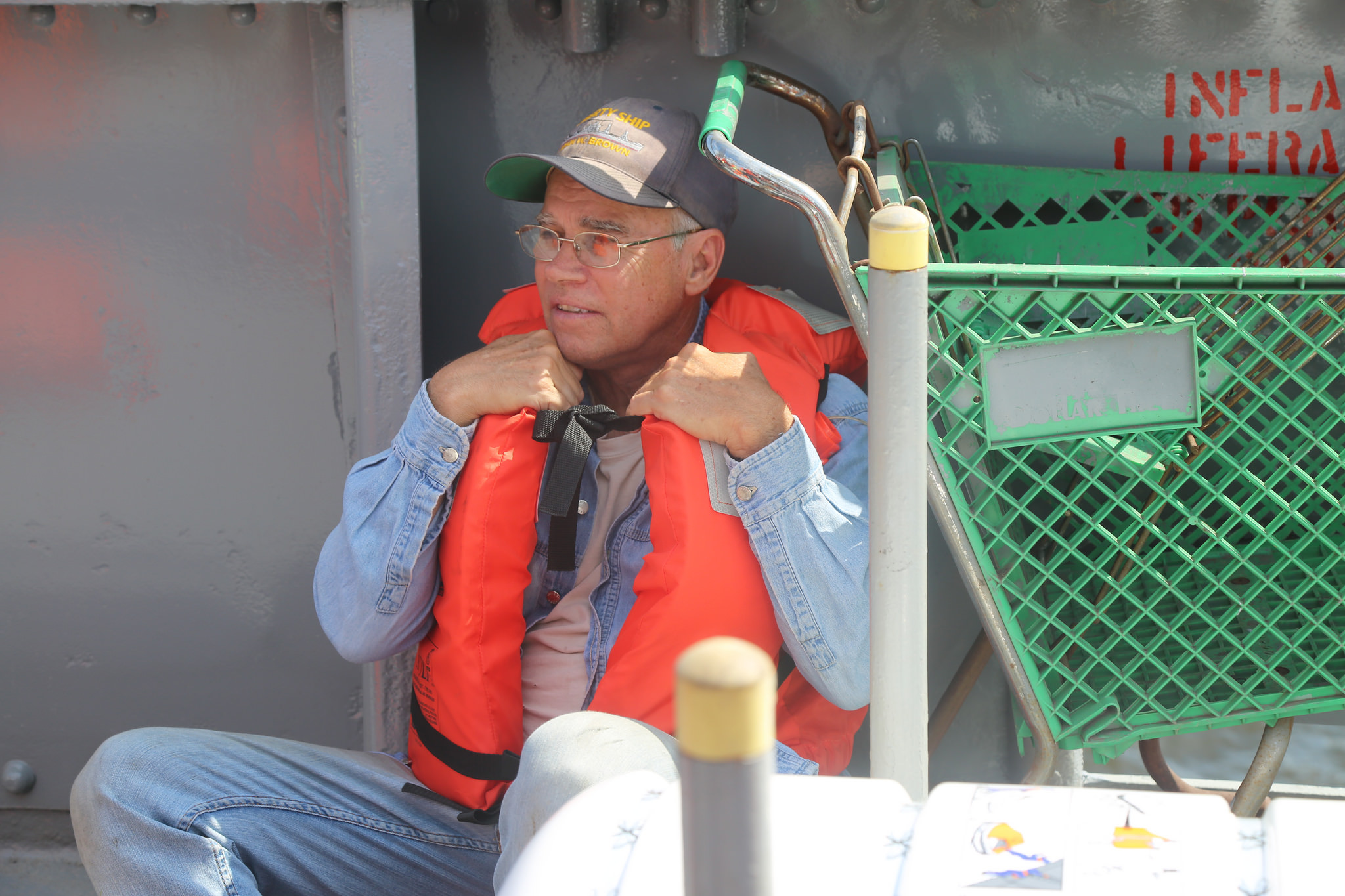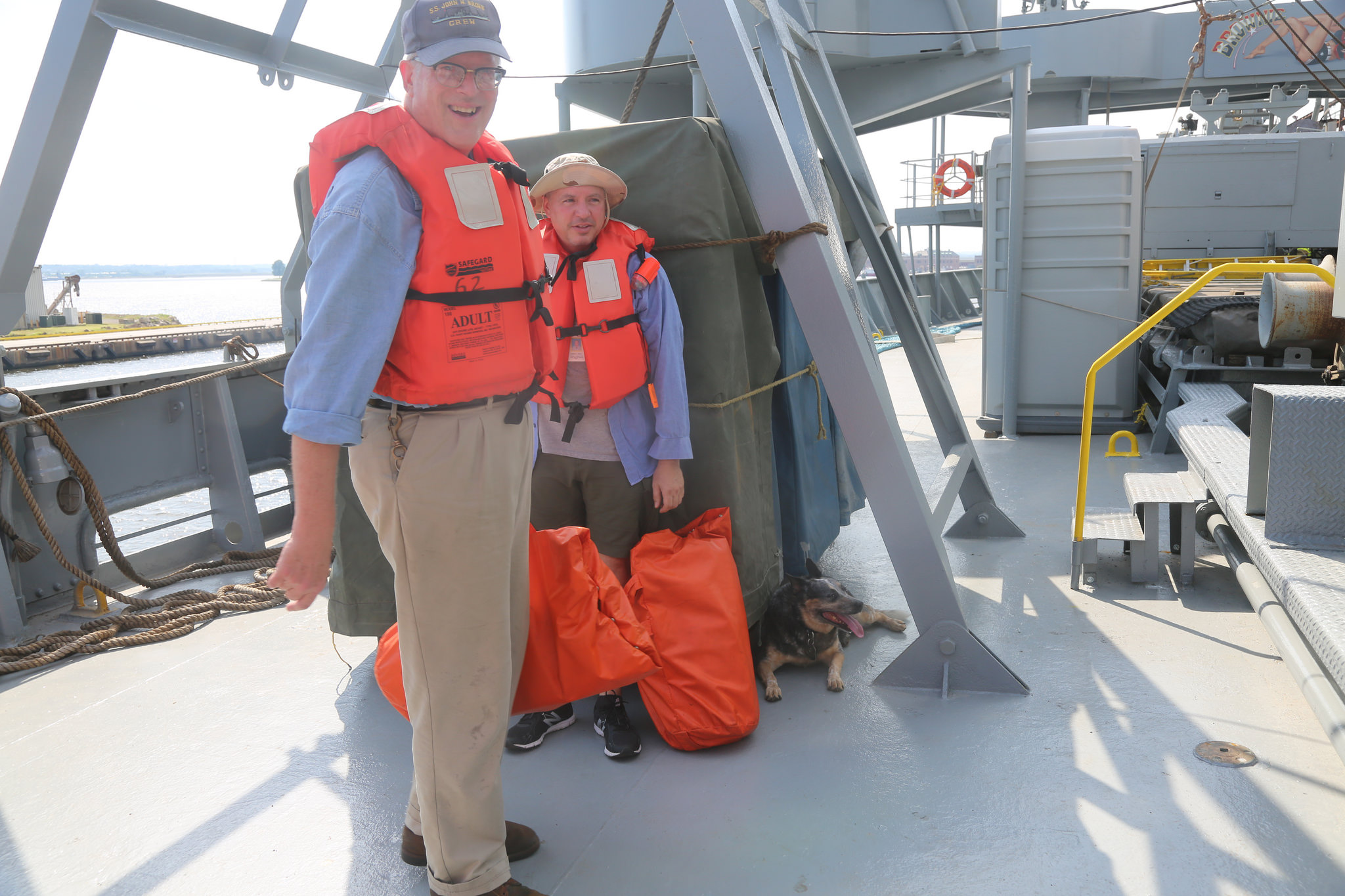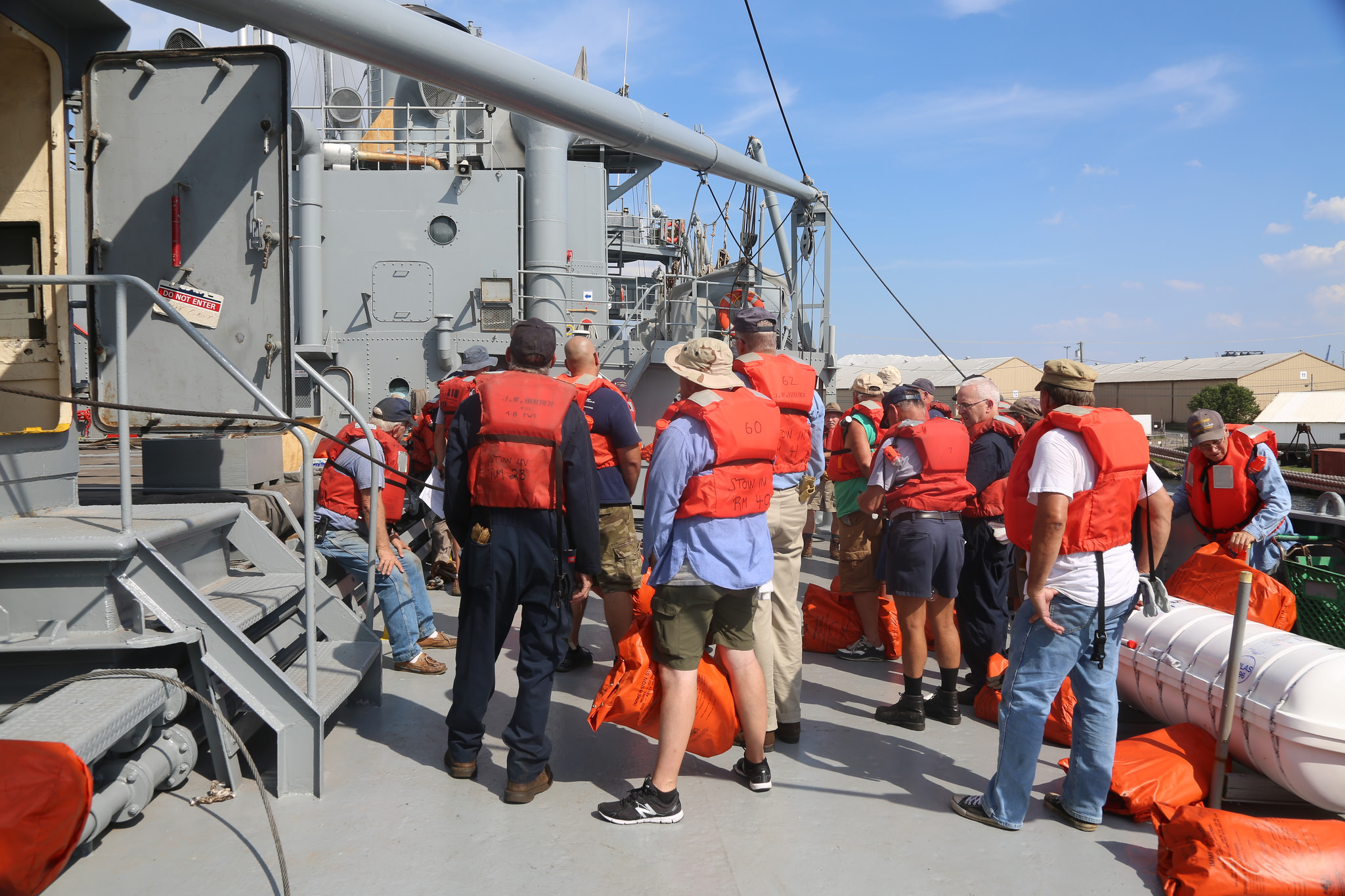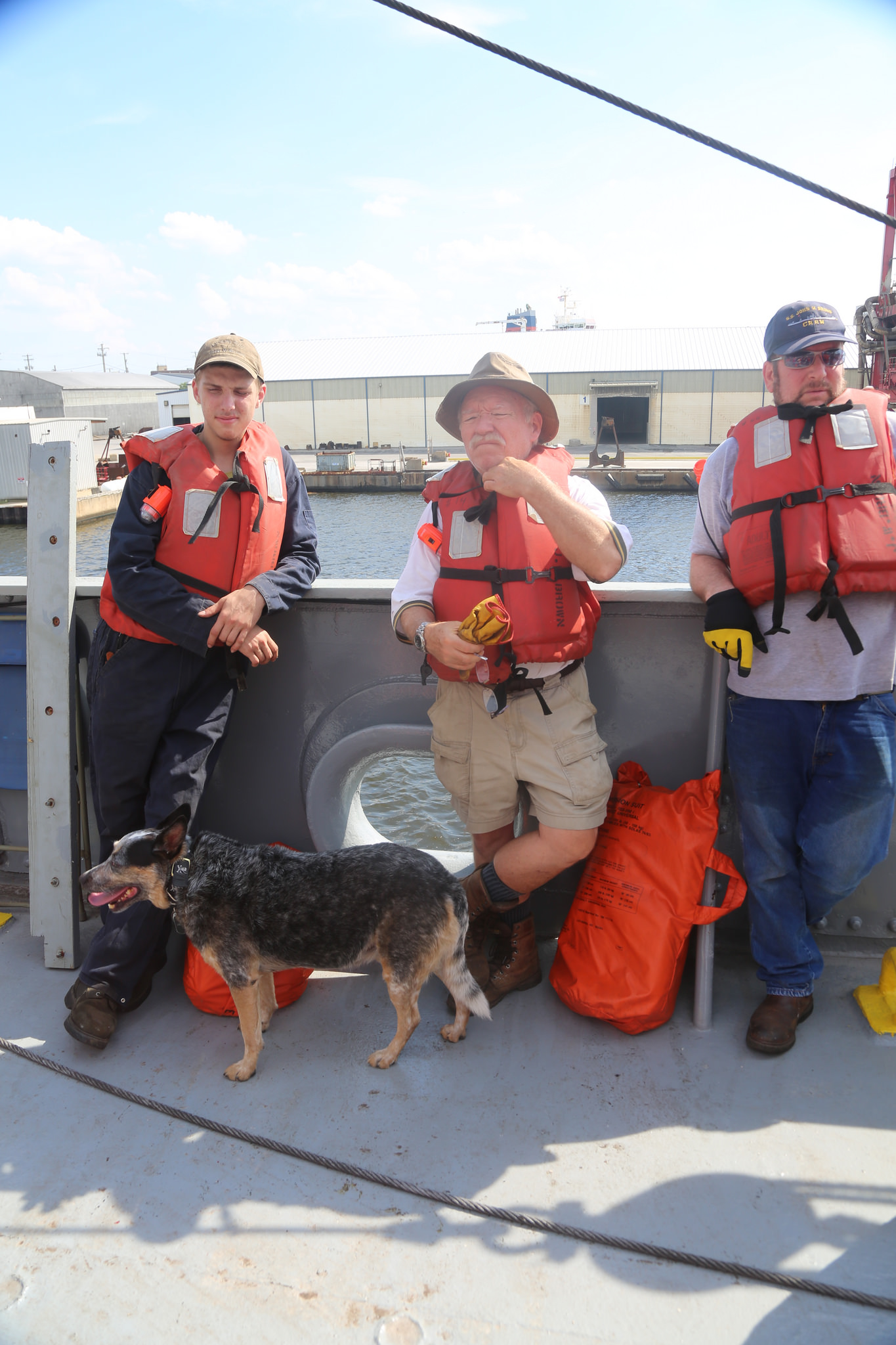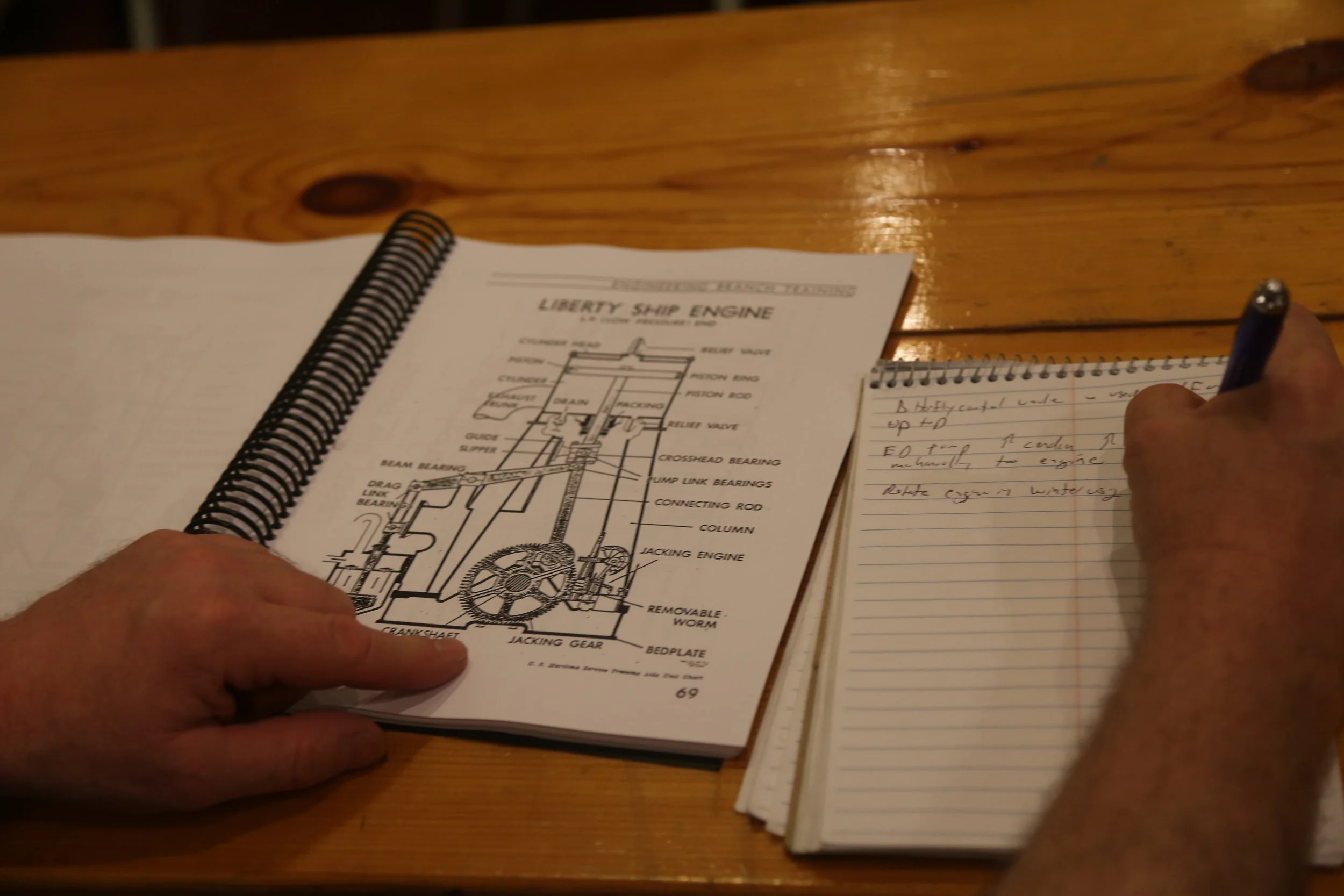S.S. JOHN W. BROWN
Designed as cheap and quickly built cargo steamers, the Liberty ships formed the backbone of a massive sealift of troops, arms, materiel and ordnance to every theater of war. Two-thirds of all the cargo that left the United States during the war was shipped in Liberty ships. Two hundred of them were lost, either to enemy action or to a range of maritime mishaps such as collision, grounding, fire or sea, but there were simply so many of them that the enemy could never hope to sink enough Liberty ships to close the sea lanes, and the supplies got through.
Description
Class: EC2-S-C1 Type Liberty Ship
Launched: September 7, 1942
At: Bethlehem-Fairfield Shipyard, Baltimore, Maryland
Length: 441 feet, 6 inches
Beam: 57 feet
Draft: 27 feet, 9 inches
Displacement: 14,245 tons
Gross: 7,176 tons
Capacity: 8,500 long tons
Armament: Three 3-inch/50 caliber guns; one 5-inch/38 caliber gun; eight 20mm guns.
S.S. JOHN W. BROWN looks now almost exactly as she did toward the end of World War II. Despite her grey paint and many guns, she is not a warship but rather a merchant ship. The BROWN was built by the government and was under the control of the War Shipping Administration. This ship and her many sisters were operated under what was known as a general agency agreement, by almost 90 different American steamship companies, which were paid by Uncle Sam to manage the ships. The cargo they carried and the ports they visited were entirely controlled by the government.
A Liberty ship can carry almost 9,000 tons of cargo, about the same as 300 railroad boxcars. Liberty ships carried every conceivable cargo during the war - from beans to bullets. Some, like JOHN W. BROWN, were also fitted out to carry troops as well as cargo. Around 500 soldiers at a time could be carried aboard this ship. She saw duty in many Mediterranean ports during invasions and steamed in convoys that were attacked by enemy aircraft and submarines, but she was never seriously damaged by the enemy.
Launching
The BROWN was launched at the Bethlehem-Fairfield Shipyard in Baltimore, Maryland, on September 7, 1942, Labor Day. Six Liberty ships were launched that day from various shipyards, all of them named after a labor leader. The BROWN was named after John W. Brown, a labor leader from Maine who had died in 1941.
Engine
The ship is powered by a reciprocating, triple-expansion steam engine, a relic from an earlier day in maritime history. The engine is fed with steam from two oil-fired boilers and drives a single, four-bladed propeller, 18 feet in diameter.
Armament
Like all U.S. merchant ships during World War II, JOHN W. BROWN carried defensive weapons. Her armament included a 3-inch/50 caliber gun in the bow; one 5-inch/38 caliber gun and two 3-inch/50 caliber guns in the stern; and eight 20mm anti-aircraft guns. Two of the 20mm guns flanked the 3-inch/50 bow gun, four more 20mm guns were at the corners of the flying bridge, and two 20mm guns were in elevated gun platforms on the port and starboard after deck. Since JOHN W. BROWN carried troops as well as cargo, she had a greater number of guns than was the case with merchant ships that carried cargo only. A cargo-carrying Liberty ship would typically have had one 5-inch/38 caliber gun, one 3-inch/50 caliber gun and eight 20mm guns.
As with U.S. and other Allied merchant ships, the guns on JOHN W. BROWN were manned by a detachment of U.S. Navy personnel assigned to the ship. They were known as the U.S. Navy Armed Guard. All American and many Allied merchant ships carried Armed Guard gunners during the war. The gunners of JOHN W. BROWN shot down at least one enemy plane during the invasion of southern France in August 1944.
Wartime Service
The BROWN made 13 voyages during World War II. Her maiden voyage was to the Persian Gulf, carrying military equipment for Russia, which could only be supplied from the Persian Gulf or via convoys to Murmansk, the infamous "Murmansk run." On this voyage the BROWN proceeded through the Caribbean Ocean, through the Panama Canal, south along the western coast of South America and around Cape Horn, across the South Atlantic around the Cape of Good Hope, north along the east coast of Africa, and into the Persian Gulf. Interestingly, the BROWN sailed alone and unescorted for most of this voyage. Her route, especially the portion along the west coast of South America, was planned so as to minimize the chances of encountering enemy submarines. The BROWN returned to North America, making a stop in South America to load a cargo of bauxite, used in making aluminum.
Most of the rest of the BROWN's wartime voyages were to the Mediterranean Sea, including duty during the Anzio landings. She was also a part of the invasion force of southern France during Operation Dragoon in August 1944. While in the Mediterranean, the BROWN typically spent several months moving between ports in North Africa, Italy and southern France, moving supplies, equipment and troops as needed, before finally returning to North America. On all of these voyages, the BROWN sailed in convoys.
The BROWN was crewed by about 45 civilian merchant seamen and, as already noted, her guns were manned by 41 Navy Armed Guard personnel assigned to the ship. The size of the merchant marine crew varied slightly from voyage to voyage, depending on the number of troops she carried.
Immediately following the war, the BROWN carried government cargoes to help rebuild war-torn Europe.
Schoolship
In 1946 the government loaned the BROWN to the City of New York, where she became a floating maritime high school, the only one in the United States. The ship served in that capacity from 1946 to 1982, graduating thousands of students prepared to begin careers in the merchant marine. During that time the BROWN was lovingly cared for by her students and instructors, making her reactivation by our volunteers that much easier.
Restoration
Acquired by Project Liberty Ship, Inc., the BROWN arrived in Baltimore to serve as a museum ship and memorial in 1988. She is the only Liberty ship on the East Coast. The BROWN has been rededicated as a memorial museum ship. She honors the memory of the shipyard workers, merchant seamen and Naval Armed Guard who built, sailed and defended the Liberty fleet. S.S. JOHN W. BROWN is listed in the National Register of Historic Places.
There are some fifty old navy ships located all around our coasts as naval memorials, but only five merchant ships. With one exception, none of the naval vessels are active, steaming vessels; all are static displays. (The one exception is LST-325.) But four of the five merchant ships are living, steaming memorials, whose all-volunteer crews have returned them to operating condition in order to show visitors just how it was to operate a World War II-era merchant ship. These men and women, many of whom are themselves veterans of the shipyards, merchant marine or Armed Guard, are convinced that this is the best way to rekindle the American spirit that saw this country through the dark days of World War II. JOHN W. BROWN is a living example of how America united can accomplish any goal!
Our volunteer crew (we are all volunteers - we have no paid staff) invite you to enjoy your visit aboard this historic ship and ask that you please leave the BROWN a generous donation. Your generosity will help continue the restoration process aboard this piece of living American history.
